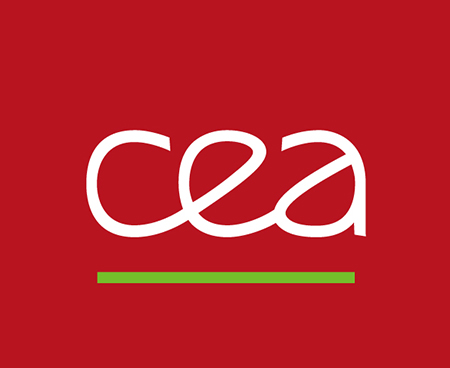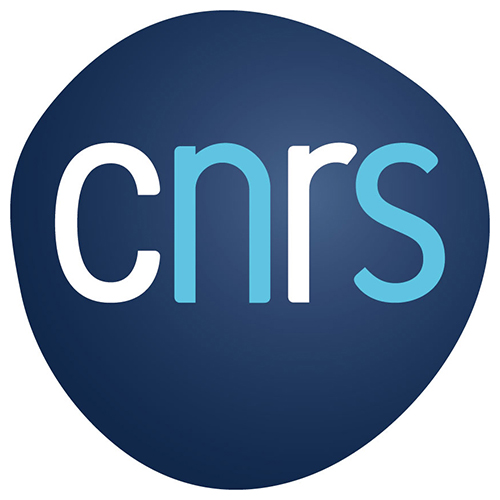Facility
ALIENOR

introduction
ALIENOR is a electron linear accelerator located at CEA Saclay (https://www.cea.fr/paris-saclay). It is operated by NIMBE (UMR 3685)/LIONS laboratory (http://iramis.cea.fr/Pisp/lions/index.html) in building 546. It generates 10 MeV pulsed electrons. The duration of the pulses can be tuned from 10 ns to 200 ns, with a beam surface of 1 cm2. The dose per pulse is around 20 Gy (1 Gy = 1 J.kg-1) for a 10 ns electron beam, and the frequency of the pulses can be changed between single shot to 10 Hz (1 Hz, 2 Hz…..10 Hz). The total number of pulses is measured, allowing the estimation of the total dose received by the sample. The maximum total dose received by the sample in one day can range between 1 and 10 MGy, depending on the experimental conditions
Interest :
• The 10 MeV electrons are penetrating (probed volume : cm3). Changes in the sample after irradiation can be probed by many techniques : gas measurements, spectroscopies, etc. The environment of the sample can be instrumented (temperature, pressure, etc.) The penetration of the 10 MeV electrons allows performing complex
experiments (samples with biological or radiological risks, after safety assessment) with a well-defined energy deposition.
• The sample is not activated. (Note : The atomic number of the elements significantly present in the
samples should be lower than 79. If not, please contact us).
• Possibility of reaching high doses in a short time (50 kGy in ten minutes) in order to better understand the evolution of samples with irradiation.
• For the user, minimal transformation of his/her sample environment : Irradiation of batteries, photovoltaic cells…. Immediate access to post mortem analyzes (no activation ; measurements of gases such as H2, CO, CO2, CH4…. produced upon irradiation ; spectroscopies…..) Measured dosimetry
Main applications : irradiation under high pressure/high temperature conditions, high dose irradiation (maximum 10 MGy), low temperature irradiation, focused irradiation (radiotherapy), equipment testing.
Publication :
![]() “Confined water radiolysis in aluminosilicate nanotubes : the importance of charge separation effects”, M.-C. Pignié, V. Shcherbakov, T. Charpentier, M. Moskura, C. Carteret, S. Denisov, M. Mostafavi, A. Thill and S. Le Caër, Nanoscale, 13, 3092 (2021) (https://pubs.rsc.org/en/content/articlehtml/2021/nr/d0nr08948f)
“Confined water radiolysis in aluminosilicate nanotubes : the importance of charge separation effects”, M.-C. Pignié, V. Shcherbakov, T. Charpentier, M. Moskura, C. Carteret, S. Denisov, M. Mostafavi, A. Thill and S. Le Caër, Nanoscale, 13, 3092 (2021) (https://pubs.rsc.org/en/content/articlehtml/2021/nr/d0nr08948f)![]() “Efficient hydrogen production from irradiated aluminum hydroxides”, J. A. Kaddissy, S. Esnouf, D. Saffré, J.-P. Renault, Int. J. Hydrogen Energy, 44, 3737 (2019) (https://www.sciencedirect.com/science/article/pii/S0360319918340576)
“Efficient hydrogen production from irradiated aluminum hydroxides”, J. A. Kaddissy, S. Esnouf, D. Saffré, J.-P. Renault, Int. J. Hydrogen Energy, 44, 3737 (2019) (https://www.sciencedirect.com/science/article/pii/S0360319918340576)![]() “Irradiation Effects on Polymer-Grafted Gold Nanoparticles for Cancer Therapy”, M. Le Goas, A. Paquirissamy, D. Gargouri, G. Fadda, F. Testard, C. Aymes-Chodur, E. Jubeli, T. Pourcher, B. Cambien, S. Palacin, J.-P. Renault, and G. Carrot, ACS Appl. Bio Mater., 2, 144–154 (2019) (https://pubs.acs.org/doi/abs/10.1021/acsabm.8b00484)
“Irradiation Effects on Polymer-Grafted Gold Nanoparticles for Cancer Therapy”, M. Le Goas, A. Paquirissamy, D. Gargouri, G. Fadda, F. Testard, C. Aymes-Chodur, E. Jubeli, T. Pourcher, B. Cambien, S. Palacin, J.-P. Renault, and G. Carrot, ACS Appl. Bio Mater., 2, 144–154 (2019) (https://pubs.acs.org/doi/abs/10.1021/acsabm.8b00484)![]() “Tuning the Nature of the Anion in Hydrated Layered Double Hydroxides for H2 Production under Ionizing Radiation”, M. Lainé, Y. Liao, F. Varenne, P. Picot, L. J. Michot, E. Barruet, V. Geertsen, A. Thill, M. Pelletier, J.-B. Brubach, P. Roy, S. Le Caër, ACS Appl. Nano Mater., 1, 5246 (2018) (https://pubs.acs.org/doi/abs/10.1021/acsanm.8b01240)
“Tuning the Nature of the Anion in Hydrated Layered Double Hydroxides for H2 Production under Ionizing Radiation”, M. Lainé, Y. Liao, F. Varenne, P. Picot, L. J. Michot, E. Barruet, V. Geertsen, A. Thill, M. Pelletier, J.-B. Brubach, P. Roy, S. Le Caër, ACS Appl. Nano Mater., 1, 5246 (2018) (https://pubs.acs.org/doi/abs/10.1021/acsanm.8b01240)![]() “Production of H2 by water radiolysis in cement paste under electron irradiation : A joint experimental and theoretical study”, S. Le Caër, L. Dezerald, K. Boukari, M. Lainé, S. Taupin, R. M. Kavanagh, C. S. N. Johnston, E. Foy, T. Charpentier, K. J. Krakowiak, R. J.-M. Pellenq, F. J. Ulm, G. A. Tribello, J. Kohanoff, A. Saúl, Cement Concrete Res., 100, 110 (2017) (https://www.sciencedirect.com/science/article/pii/S0008884617302065)
“Production of H2 by water radiolysis in cement paste under electron irradiation : A joint experimental and theoretical study”, S. Le Caër, L. Dezerald, K. Boukari, M. Lainé, S. Taupin, R. M. Kavanagh, C. S. N. Johnston, E. Foy, T. Charpentier, K. J. Krakowiak, R. J.-M. Pellenq, F. J. Ulm, G. A. Tribello, J. Kohanoff, A. Saúl, Cement Concrete Res., 100, 110 (2017) (https://www.sciencedirect.com/science/article/pii/S0008884617302065)![]() “Radiolysis as a solution for accelerated ageing studies of electrolytes in Lithium-ion batteries”, D. Ortiz, V. Steinmetz, D. Durand, S. Legand, V. Dauvois, P. Maître, S. Le Caër, Nat. Comm., 6, DOI : 10.1038/ncomms7950 (2015) (https://www.nature.com/articles/ncomms7950).
“Radiolysis as a solution for accelerated ageing studies of electrolytes in Lithium-ion batteries”, D. Ortiz, V. Steinmetz, D. Durand, S. Legand, V. Dauvois, P. Maître, S. Le Caër, Nat. Comm., 6, DOI : 10.1038/ncomms7950 (2015) (https://www.nature.com/articles/ncomms7950).
Contact :




